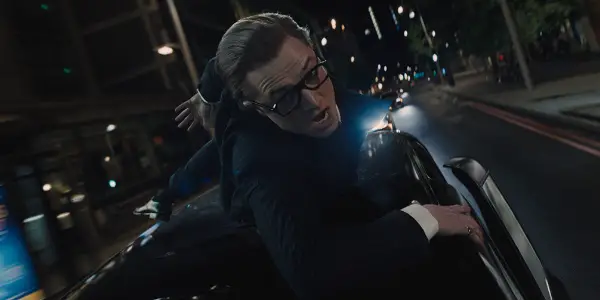
Fast cars have always played a prominent role in films. Bond wouldn’t be Bond without a flash Aston Martin and Starsky and Hutch just wouldn’t be the same without the iconic Ford Gran Torino tearing around the streets of Los Angeles.
However, the future of transportation in film is changing rapidly. In the past, electric vehicles (EVs) were inventions only seen in science fiction blockbusters. But today, technology has progressed enough that these innovations are becoming increasingly commonplace. Driving an EV today is associated with being more environmentally friendly, but they have become a status symbol for the wealthy.
So what if a director wants to use an EV to provide a sleek and futuristic look to their work? This doesn’t come without its challenges. As well as being expensive, EVs are powered by battery cells which may perform differently under on-set pressures like high heat or freezing rains. But many filmmakers are still opting to use these vehicles onset and onscreen.
Rising Popularity of EVs
Electric vehicle appearances in film have risen by 140 percent in the past five years. This meteoric rise of on-screen appearances is likely due to the widespread public adoption of EVs. The film industry has also taken bold steps to electrify recognizable cars like the Batmobile and Barbie’s Corvette.
Kingsman: The Golden Circle (2017) – source: 20th Century Fox
Currently, the Tesla Model S is the most popular on-screen car having features in The Kingsman, Fifty Shades of Grey, and Entourage. Tesla is closely followed by the Nissan Leaf which has featured in a total of 42 films so far.
The recent rise of EVs in film isn’t just an eco-friendly choice that resonates well with viewers. Producers can save money by taking advantage of federal tax credits for EV purchases. New cars are eligible for $7,500 in credits, while used cars that are over two years old and less than $25,000 are eligible for $4,000 in credit. This is key for producers aiming to buy high-performing sports cars while working to a strict budget.
Eco-Conscious Symbols
Climate change related documentaries and films are becoming increasingly common at the box office. Whether it’s celebrity-backed documentaries such as Common Ground detailing the need for an overhaul to the nation’s food system, or anti-authority and grassroots guerilla movements as shown in How to Blow Up a Pipeline movies with some type of environmental message are becoming increasingly common. The use of greener technology on screen is just one possible way that filmmakers might attempt to connect with eco-friendly viewers.
Leave the World Behind (2023) – source: Netflix
For this reason, EVs have the potential to become a visual symbol of eco-friendly living. If a director wants to pitch a character as eco-friendly and progressive without having to script lengthy dialogue in which protagonists talk about their relationship to the environment, they could opt to place an EV in the background or show their character driving one.
EVs as a Luxury Symbol
However, part of the growing interest and rising cultural capital of EVs is due to their association with luxury and progress. The EV market is dominated by luxury car manufacturers like Tesla, Audi, and BMW. This should come as little surprise, as EVs are still expensive to produce and are largely targeted towards folks with high incomes.
Filmmakers can use this implication to build narratives that invoke a sense of opulence and high-end living. This builds an unspoken atmosphere in films and serves to raise the social profile of characters like Tony Stark, Eggsy, and Christian Grey.
Blade Runner 2049 (2017) – source: Warner Bros. Pictures
On-screen electric vehicles also give movie-goers an opportunity to imagine what life might be like in a climate-impacted future. This is a prevalent theme in Dennis Villeneuve’s Blade Runner 2049. The film features a few EVs that serve Officer K and Luv. However, the subtle purpose of Blade Runner 2049 EVs is to highlight the connection between climate change and capitalism. Officer K and Luv both drive luxury vehicles and are therefore able to float above the inhospitable environment below while the working class is forced to take refuge during devastating storms.
This portrait serves as a poignant, yet subtle reminder that EVs aren’t simply an eco-friendly choice. Instead, they serve to reinforce stratified society and can be used as a powerful symbol to reflect our increasingly divided society.
EVs on Set
EVs can serve as powerful symbols on the screen. However, maintaining EVs requires plenty of forethought and planning.
While EVs are held to the same rigorous safety standards as combustion engine cars, producers should make additional efforts to store vehicles safely. Preventing water damage in carports and garages is key as climate-induced flooding becomes more widespread. While filmmakers can’t redirect the flow of floodwater, picture car coordinators should keep sandbags, airbricks, and freestanding barriers close at hand.
Iron Man (2008) – source: Paramount Pictures
Just like combustion engine cars, EVs require regular maintenance. However, EV maintenance is a little different. Picture car coordinators in charge of Teslas and Nissans should:
Check coolant battery levels;
Test charger modules and power inverters;
Drain and service coolant circuits;
Keep an eye on a range to ensure battery degradation is at normal levels.
Regular maintenance can protect EVs against the wear and tear associated with stunt cars. This is particularly important in the build-up to shoots like chase scenes and lengthy drives on winding roads. Properly maintaining EVs may help producers score lower rental prices by increasing the resale value of cars that have been used on set. This is particularly important for films on a microbudget that need to balance the books as quickly as possible to fund future projects.
Producers should be vigilant to protect actors and crew from untested EV tech, too. Recently, two million Teslas were recalled after defects in the car’s autopilot were discovered. This highlights the importance of caution when working with EVs on set as the emerging tech still requires significant oversight.
Conclusion
Electric vehicles represent the future of transportation. Filmmakers can make use of this reality by leveraging EVs as symbols on the screen. This can portray characters as eco-friendly and create an atmosphere of luxury in certain scenes. Alternatively, EVs can be used to make important social critiques to make folks think about their relation to climate change.
Does content like this matter to you?
Become a Member and support film journalism. Unlock access to all of Film Inquiry`s great articles. Join a community of like-minded readers who are passionate about cinema – get access to our private members Network, give back to independent filmmakers, and more.




